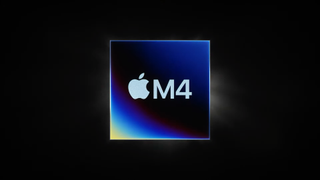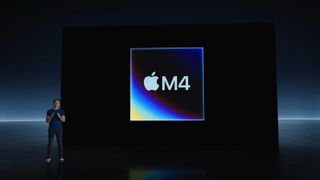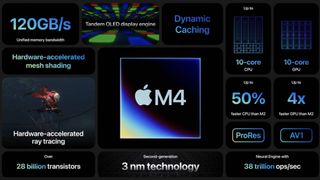Apple M4 chip: specs, performance, and when we expect to see them in Macs
The Apple M4 chip powers the iPad Pro, but is likely to come to Macs this year

Apple officially announced its latest silicon, the Apple M4, at its May 'Let Loose' event, the first time the company has announced a new chip in a tablet without first bringing it to its Mac desktops and laptops.
We've got a good bit of detail on the Apple M4 thanks to the announcement and what to expect from the new chip and when we can expect it to make its way to the rest of the Apple ecosystem.
So, lets dig into this exciting piece of hardware and talk about this powerful new SoC.
Apple M4 chip: Cut to the chase
- What is it? Apple's next generation of in-house silicon
- How much does it cost? It doesn't sell on its own, but instead powers various Apple devices
- When can I get it? It is available now in iPad Pro devices, and may come in Mac devices as soon as late October 2024
Apple M4 chip: Latest news
- M4 MacBook Pro, Mac mini, and iMac are reportedly on track for 2024 launch
- Keen for the MacBook Air M4? Good news – it might turn up earlier than we thought in 2025
- Some of Apple’s M4 Macs are already shipping ahead of rumored October launch
Read more Apple M4 news...
- Apple’s big Mac M4 reveal could happen in October, ahead of rumored on-sale date of November
- Apple’s M4 Macs spotted in testing – with a hint that entry-level MacBook Pro 14-inch could get the RAM upgrade everyone craves
- Apple M4 chip debuts in iPad Pro as Apple pulls further ahead of Microsoft and Intel
- The Mac Mini M4 is coming – and it could be the smallest Mac that Apple’s ever made
- I ditched my laptop for an iPad Pro for a few weeks – here’s what I learned
- Apple's iPad Air 6 launches with a bigger 12.9-inch screen and MacBook-level chipset
- If Apple debuts the M4 chip in an iPad, it tells me it's losing faith in its MacBooks – but I won't be giving mine up
- Apple could be playing it smart by waiting for its M4 chips before releasing a new Mac mini
- Apple might start developing its own AI chips - here’s what that means for Mac lovers
- The first M4 Macs could land this year as Apple looks to make up ground in the AI race
- Apple M4 chips could debut early next year - if these professional predictors are correct
- Forget the new MacBook Airs – Apple might already be working on M4 MacBook Pros
Apple M4 chip: Release date

The Apple M4 chip was announced at the May 7, 2024, 'Let Loose' iPad event and shipped with iPad Pro devices on May 13, 2024.
It is expected to be introduced into the Mac lineup, starting with the MacBook Pro 14-inch (2024), Apple Mac mini (2024), and iMac (2024), as early as October 2024, with Apple MacBook Air devices getting the chips in 2025.
However, the order of which devices get the new M4 chip could be shuffled around a bit, and we simply won't know until new products with the chip are announced.
Apple M4 chip: Specs

The Apple M4 is built on TSMC's 3nm process node, the same as the Apple M3 chip, though Apple does refer to it as a 'second-generation' chip, so it's more advanced than the Apple M3.
Get daily insight, inspiration and deals in your inbox
Sign up for breaking news, reviews, opinion, top tech deals, and more.
It features up to a 10-core CPU (4 performance cores and 6 efficiency cores) and a 10-core GPU, up from the 8-core CPU and 8-core GPU of the base M3 chip, and supports up to 38 trillion operations per second (TOPS) in its 16-core neural engine (Apple's version of an NPU).
It contains 28 billion transistors, up from 25 billion in the M3, and can support up to 128GB of unified memory.
Like the M3, the Apple M4 also has support for hardware-accelerated ray tracing, dynamic caching, and mesh shading. It also features dynamic caching, which improves the memory efficiency of GPU-intensive tasks.
The new M4 chip also introduces support for Tandem OLED displays, which use two OLED pixel layers together to create a single display that offers better efficiency and longevity than traditional OLED panels, as well as hardware-accelerated AV1 media support for the first time.

John (He/Him) is the Components Editor here at TechRadar and he is also a programmer, gamer, activist, and Brooklyn College alum currently living in Brooklyn, NY.
Named by the CTA as a CES 2020 Media Trailblazer for his science and technology reporting, John specializes in all areas of computer science, including industry news, hardware reviews, PC gaming, as well as general science writing and the social impact of the tech industry.
You can find him online on Threads @johnloeffler.
Currently playing: Baldur's Gate 3 (just like everyone else).
Most Popular






